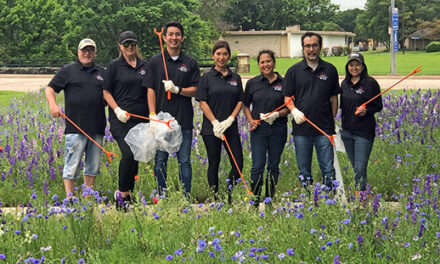The webworm or Hyphantria cunea are the larval form of a small white moth commonly seen in the summer months which spin unattractive nests in the crotches of tree branches.
The caterpillars are about an inch long and will spend the duration of their larval state inside these nests, feasting on the encased leaves. Webworms are mostly found in pecan, elm, cottonwood, mulberry and redbud trees.
“This can be unsightly, and a lot of times people get a little bit worried about their tree, but it would take several years of heavy infestation to really damage a tree,” said Shohn Rodgers, superintendent of parks for the City of Richardson’s Parks and Recreation Deparmtent.
There is generally no harm in leaving these webs intact because eventually the nets will break apart on their own, but there is a way to get rid of them.
Residents can physically break open the webs and allow birds and other predators to eat the caterpillars. Pesticides such as Bacillus Thurengensis can also be used to deal with webworms.
Visit www.cor.net/epi for more environmental stories and to sign up for the City’s Environmental Resource Newsletter.




